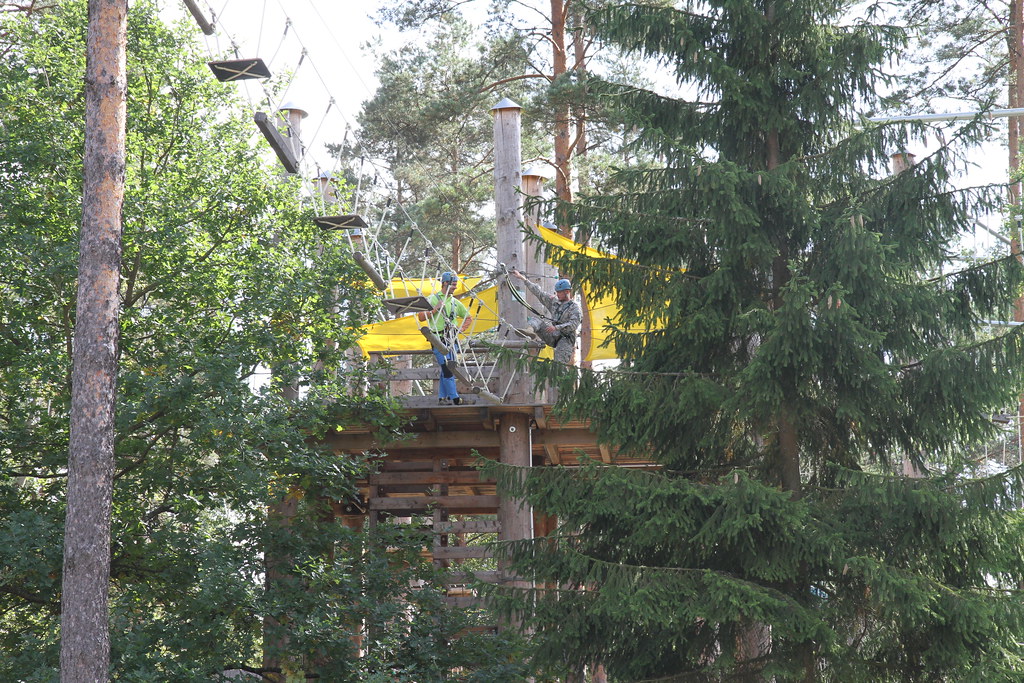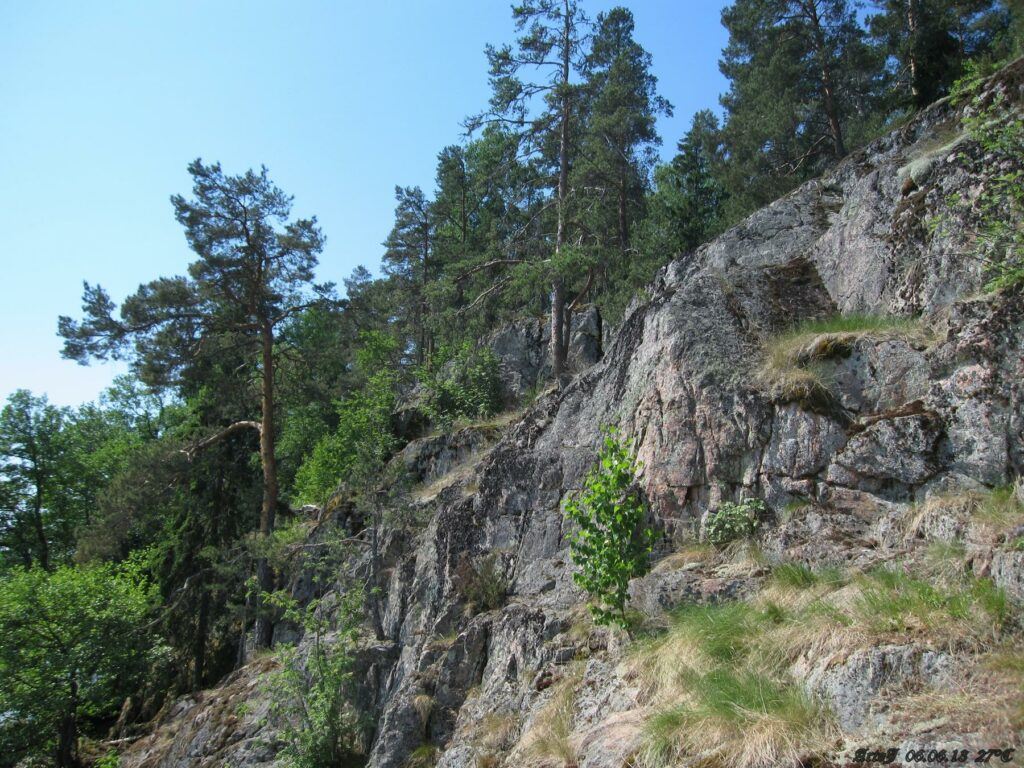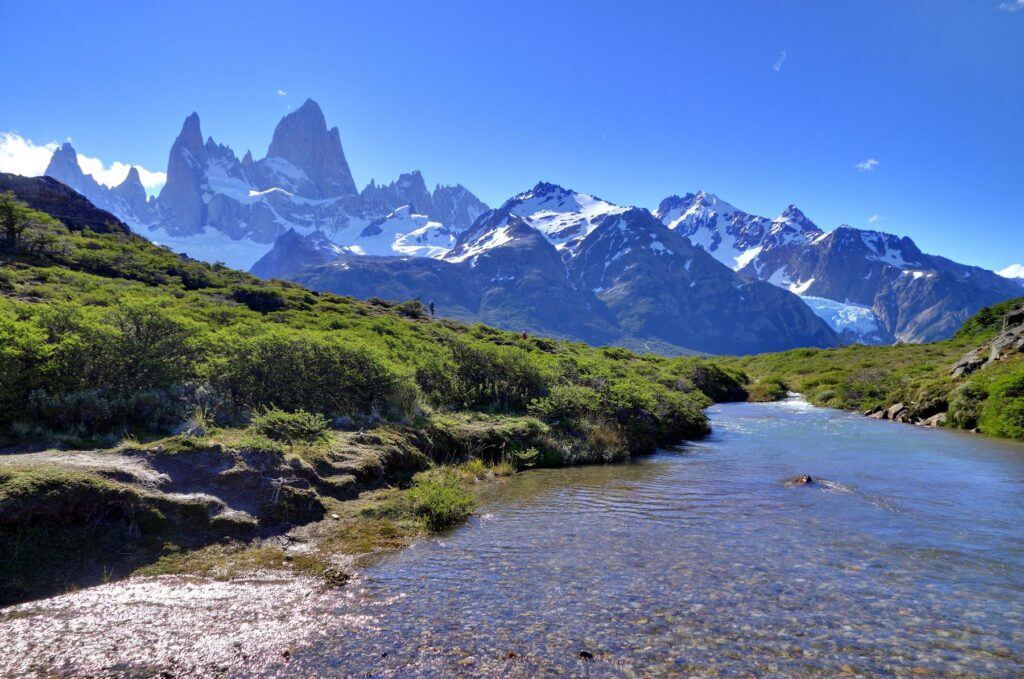Looking for the best trail equipment to make your next outdoor adventure a success? Look no further! In this guide, we’ll cover everything you need to know about trail equipment, from backpacks and tents to sleeping bags and hiking boots. Whether you’re planning a day hike or a multi-day backpacking trip, having the right gear is essential for a safe and enjoyable experience. Read on to discover the best trail equipment on the market, as well as tips and advice for choosing the right gear for your needs.
Types of Trail Equipment
Trail equipment is a critical aspect of every outdoor excursion, and choosing the right gear is essential for a safe and comfortable adventure. From backpacks to sleeping bags, here are some essential types of trail equipment to consider:
Backpacks
Backpacks are the most important piece of equipment for any hiker or backpacker. They come in different sizes and styles, designed for day hikes or multi-day backpacking trips.
Daypacks
Daypacks are smaller backpacks designed for day hikes and shorter excursions. They typically have a capacity of 20 to 30 liters. Daypacks are lightweight, with comfortable straps and a padded back panel to provide support and ventilation. These backpacks also have multiple pockets and compartments to organize your gear.
Multi-Day Packs
Multi-day packs are designed for backpacking trips that last more than a day. They have a capacity of 50 to 80 liters and can carry all the gear you need for several days. Multi-day packs have a sturdy frame and padded hip belt to distribute the weight evenly and reduce the strain on your shoulders.
When choosing a backpack, look for features such as adjustable straps, hip belts, and ventilation systems. Some recommended brands for backpacks include Osprey, Deuter, and Gregory.
Tents
Tents are essential for camping and backpacking trips. They provide shelter from the elements and keep you warm and dry. There are two main types of tents: backpacking tents and car camping tents.
Backpacking Tents
Backpacking tents are lightweight and compact, designed for backpackers who need to carry their tent with them. They are easy to set up and take down, and can withstand harsh weather conditions. Backpacking tents are available in one-person, two-person, and three-person sizes.
Car Camping Tents
Car camping tents are larger and more spacious than backpacking tents. They are designed for campers who drive to their campsite and do not need to carry their tent with them. Car camping tents are available in various sizes, from four-person to ten-person tents.
When choosing a tent, consider factors such as weight, size, and weather resistance. Some recommended brands for tents include MSR, Big Agnes, and REI.

Sleeping Bags
Sleeping bags keep you warm and comfortable while camping or backpacking. There are two main types of sleeping bags: synthetic sleeping bags and down sleeping bags.
Synthetic Sleeping Bags
Synthetic sleeping bags are made from synthetic fibers, which are lightweight and water-resistant. They are less expensive than down sleeping bags and can be used in wet conditions. Synthetic sleeping bags are available in different temperature ratings, from summer bags to winter bags.
Down Sleeping Bags
Down sleeping bags are made from the soft feathers of ducks or geese. They are lightweight and packable, providing excellent insulation in cold weather. Down sleeping bags are available in different fill powers and temperature ratings.
When choosing a sleeping bag, consider factors such as temperature rating, weight, and packability. Some recommended brands for sleeping bags include Marmot, The North Face, and Western Mountaineering.
Hiking Boots
Hiking boots are essential for any hiking or backpacking trip. They provide support and protection for your feet, preventing injuries and blisters. There are three main types of hiking boots: trail runners, hiking shoes, and hiking boots.
Trail Runners
Trail runners are lightweight shoes designed for hiking on trails and rough terrain. They are comfortable and breathable, with a low-cut design that allows for more flexibility and speed. Trail runners are recommended for day hikes and short backpacking trips.
Hiking Shoes
Hiking shoes are similar to trail runners but provide more support and protection. They have a mid-cut design that provides ankle support and a sturdier sole for better traction. Hiking shoes are recommended for longer backpacking trips and more challenging terrain.
Hiking Boots
Hiking boots are the most supportive and protective type of hiking footwear. They have a high-cut design that provides ankle support and a stiff sole that can handle rough terrain. Hiking boots are recommended for multi-day backpacking trips and hiking in rugged terrain.
When choosing hiking boots, consider factors such as ankle support, sole stiffness, and waterproofing. Some recommended brands for hiking boots include Salomon, Merrell, and Vasque.
Trekking Poles
Trekking poles are optional but can be very helpful for hikers and backpackers. They provide extra support and stability, especially when hiking on steep or uneven terrain. Trekking poles can also reduce strain on your knees and improve your balance.
When choosing trekking poles, consider factors such as weight, length, and grip. Some recommended brands for trekking poles include Black Diamond, Leki, and REI.

Choosing the Right Trail Equipment
Choosing the right trail equipment is essential for a safe and comfortable outdoor adventure. Here are some tips to help you choose the gear that best fits your needs:
- Consider your trip length and type of terrain. For example, choose sturdy hiking boots that provide good ankle support for rocky or uneven terrain.
- Think about the weather. Choose a waterproof backpack and tent for rainy weather and a sleeping bag with a lower temperature rating for colder weather.
- Consider the weight of your gear. Lighter gear is often more expensive but can make a big difference in your comfort and energy level on the trail.
- Try before you buy. Test out gear before making a purchase. Many outdoor retailers offer gear rental programs, allowing you to try out equipment before you commit to buying it.
Recommended brands for trail equipment include Osprey, Deuter, Gregory, MSR, Big Agnes, The North Face, Western Mountaineering, Salomon, Merrell, Vasque, Black Diamond, Leki, and REI.

New Trends and Innovations in Trail Equipment
If you’re a trail enthusiast, then staying up to date with the latest trends and innovations in trail equipment is a must. Here are some of the latest trends and innovations in trail equipment:
Ultralight Backpacking Gear
Ultralight backpacking gear is becoming increasingly popular among hikers and backpackers. Backpacks, tents, and sleeping bags are becoming lighter and more packable, allowing backpackers to carry less weight and move faster on the trail. This is achieved by using lightweight materials, such as carbon fiber, Dyneema, and titanium, which are strong and durable, yet weigh significantly less than traditional materials.
Waterproof and Breathable Fabrics
Many trail equipment manufacturers are using new materials that are both waterproof and breathable, keeping you dry and comfortable in wet conditions. These fabrics are designed to repel water while allowing moisture to escape, preventing you from getting wet and clammy inside your gear. Some popular waterproof and breathable fabrics used in trail equipment include Gore-Tex, eVent, and H2No.
Sustainable and Eco-Friendly Materials
As more people become environmentally conscious, some trail equipment manufacturers are using recycled and sustainable materials to reduce their environmental impact. These materials include recycled polyester, organic cotton, and bamboo. In addition, some companies are using eco-friendly manufacturing processes and packaging to further reduce their impact on the environment.
Smart Technology
Some trail equipment manufacturers are incorporating smart technology into their products, making them more convenient and functional for trail enthusiasts. For example, some backpacks come with GPS tracking devices that allow you to track your location and share it with others. Solar-powered chargers are also becoming more popular, allowing you to charge your electronic devices while you’re on the trail.
By keeping up with the latest trends and innovations in trail equipment, you can make sure that you have the most up-to-date and functional gear for your outdoor adventures.

Reviews and Recommendations
When choosing trail equipment, it’s important to select gear that is both comfortable and durable. Here are some of our top picks for the best trail equipment:
Backpacks
Backpacks are an essential piece of trail equipment, allowing you to carry all your necessary gear on hikes and backpacking trips. Here are our top picks for the best backpacks:
Best daypacks
- Osprey Daylite Plus: This lightweight, versatile backpack is perfect for day hikes or as a smaller pack for longer backpacking trips. With a 20-liter capacity and multiple pockets, it’s easy to keep your gear organized and accessible.
- Deuter Speed Lite 20: With a minimalist design and a comfortable fit, this backpack is perfect for day hikes or fast-and-light backpacking trips. It has a 20-liter capacity and features a breathable back panel for added comfort.
- REI Co-op Trail 25: This versatile backpack is great for day hikes or as a larger pack for shorter backpacking trips. With a 25-liter capacity and multiple pockets, it’s easy to keep your gear organized and accessible.
Best multi-day packs
- Gregory Baltoro 75: With a 75-liter capacity and a comfortable suspension system, this backpack is perfect for longer backpacking trips. It features multiple pockets, a hydration sleeve, and an adjustable fit.
- Osprey Atmos AG 65: This backpack is designed for comfort on longer backpacking trips, with a ventilated back panel and adjustable fit. It has a 65-liter capacity and multiple pockets for organization.
- Deuter Aircontact Lite 60+10: This backpack has a 60-liter capacity and an adjustable fit for comfort on longer backpacking trips. It features a breathable back panel and multiple pockets for organization.

Tents
Tents provide shelter and protection from the elements when camping, and are an essential piece of trail equipment. Here are our top picks for the best tents:
Best backpacking tents
- MSR Hubba Hubba NX 2: This lightweight, two-person tent is perfect for backpacking trips. It features a freestanding design and easy setup, with a rainfly for added protection.
- Big Agnes Copper Spur HV UL 2: With a spacious interior and lightweight design, this two-person tent is perfect for backpacking trips. It features a freestanding design and easy setup, with a rainfly and vestibule for added protection.
- REI Co-op Quarter Dome SL 2: This lightweight, two-person tent is perfect for backpacking trips. It features a freestanding design and easy setup, with a rainfly and vestibule for added protection.
Best car camping tents
- Coleman Sundome 4-Person Tent: This affordable, four-person tent is perfect for car camping trips. It features a dome design and easy setup, with a rainfly for added protection.
- REI Co-op Kingdom 6: With a spacious interior and easy setup, this six-person tent is perfect for car camping trips. It features a freestanding design and a rainfly for added protection.
- Big Agnes Big House 4: This spacious, four-person tent is perfect for car camping trips. It features a freestanding design and easy setup, with a rainfly and vestibule for added protection.
Sleeping Bags
Sleeping bags provide warmth and comfort when camping, and are an essential piece of trail equipment. Here are our top picks for the best sleeping bags:
Best synthetic sleeping bags
- Marmot Trestles Elite Eco 20: This eco-friendly sleeping bag is perfect for camping in temperatures down to 20°F. It features a synthetic fill and a comfortable fit, with a compression stuff sack for easy packing.
- The North Face Eco Trail Bed 20: This eco-friendly sleeping bag is perfect for camping in temperatures down to 20°F. It features a synthetic fill and a comfortable fit, with a compression stuff sack for easy packing.
- REI Co-op Trail Pod 29: This affordable sleeping bag is perfect for camping in temperatures down to 29°F. It features a synthetic fill and a comfortable fit, with a compression stuff sack for easy packing.
Best down sleeping bags
- Western Mountaineering UltraLite: This lightweight, high-quality sleeping bag is perfect for camping in temperatures down to 20°F. It features a down fill and a comfortable fit, with a compression stuff sack for easy packing.
- Marmot Phase 20: This lightweight, high-quality sleeping bag is perfect for camping in temperatures down to 20°F. It features a down fill and a comfortable fit, with a compression stuff sack for easy packing.
- Feathered Friends Hummingbird UL 20: This high-quality sleeping bag is perfect for camping in temperatures down to 20°F. It features a down fill and a comfortable fit, with a compression stuff sack for easy packing.
Hiking Boots
Hiking boots provide support and protection for your feet on the trail, and are an essential piece of trail equipment. Here are our top picks for the best hiking boots:
Best trail runners
- Salomon Speedcross 5: These lightweight trail runners are perfect for hiking or trail running. They feature a comfortable fit and good traction on uneven terrain.
- La Sportiva Bushido II: These trail runners are designed for performance on technical terrain, with a comfortable fit and good traction.
- Altra Lone Peak 4.5: These trail runners feature a zero-drop design and a comfortable fit, with good traction on uneven terrain.
Best hiking shoes
- Merrell Moab 2 Ventilator: These hiking shoes are perfect for day hikes or shorter backpacking trips. They feature a comfortable fit and good breathability.
- Keen Targhee III Waterproof: These hiking shoes are waterproof and perfect for hiking in wet conditions. They feature a comfortable fit and good traction on uneven terrain.
- Salomon X Ultra 3 GTX: These hiking shoes are waterproof and perfect for longer backpacking trips. They feature a comfortable fit and good traction on uneven terrain.
Best hiking boots
- Vasque St. Elias GTX: These hiking boots are perfect for longer backpacking trips or hiking in rough terrain. They are waterproof and feature a comfortable fit and good traction.
- Lowa Renegade GTX: These hiking boots are perfect for hiking in rough terrain or longer backpacking trips. They are waterproof and feature a comfortable fit and good traction.
- Salomon Quest 4D 3 GTX: These hiking boots are waterproof and perfect for longer backpacking trips or hiking in rough terrain. They feature a comfortable fit and good traction.
Maintaining and Caring for Trail Equipment
Trail equipment is an investment that can provide many years of outdoor enjoyment if properly maintained and cared for. Here are some helpful tips to ensure your gear lasts:
Clean your Gear After Each Use
Trail gear accumulates dirt, dust, and debris after use. Wipe down each item with a damp cloth or sponge and a mild detergent. Avoid using harsh chemicals or abrasive cleaners that can damage the material. Rinse with clean water and let it air dry before storing it.
Dry Gear Thoroughly Before Storage
Moisture is the enemy of trail equipment. Make sure your gear is completely dry before storing it. Use a clean towel or cloth to wipe down wet items, then hang them up to dry in a well-ventilated area. Avoid storing wet or damp gear in an enclosed space, as this can lead to mold and mildew growth.
Store Gear in a Cool, Dry Place
Proper storage is key to maintaining the quality of your trail equipment. Store your gear in a cool, dry place away from direct sunlight. A closet or gear room is ideal. Avoid storing your gear in a damp basement or hot attic, as this can damage the material and reduce its lifespan.
Check Gear for Wear and Tear Regularly
Inspect your trail gear before and after each use. Look for signs of wear and tear, such as frayed fabric, loose stitching, or broken zippers. Repair or replace damaged items as soon as possible to prevent further damage. Proactively replacing worn out gear can save you money in the long run and ensure you’re prepared for your next outdoor adventure.
By following these simple tips, you can help extend the life of your trail equipment and keep it performing at its best.
Conclusion
In conclusion, investing in the right trail equipment can greatly enhance your outdoor experience. From hiking boots to sleeping bags, each item plays a critical role in ensuring your safety and comfort during your adventure. It is important to carefully consider your specific needs when choosing equipment and make sure to invest in high-quality gear that is appropriate for your activity and environment. Additionally, properly maintaining and caring for your equipment can help extend its lifespan, ensuring that it will be there for you on many more outdoor adventures to come.
We hope this guide has been helpful in providing you with the information you need to choose the right trail equipment for your next outdoor adventure. Check out our other content for more tips and insights on outdoor recreation.
Happy trails!
Questions & Answers
Who needs trail equipment?
Anyone who enjoys hiking or backpacking in the outdoors.
What is essential trail equipment?
Backpack, tent, sleeping bag, hiking boots.
How do I choose the right hiking boots?
Consider ankle support, sole stiffness, waterproofing.
What if I can’t afford high-end gear?
Look for budget-friendly options or rent gear.
How do I maintain and care for my gear?
Clean after each use, dry before storage, inspect regularly.
What are the latest innovations in trail equipment?
Ultralight gear, waterproof and breathable fabrics, smart technology.
As an avid hiker and backpacker for over a decade, the author has extensive experience in the outdoor recreation niche. They have completed numerous multi-day backpacking trips across various terrains and weather conditions, and have tested and reviewed a wide range of trail equipment from different brands. In addition, the author holds a Bachelor’s degree in Environmental Science, which has provided them with a deep understanding of the importance of sustainable and eco-friendly trail equipment. The recommendations provided in this article are based on personal experience and extensive research, including reviews from leading outdoor gear websites and publications such as Backpacker Magazine and OutdoorGearLab.




